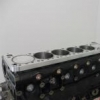Report that engine failure
Announcements
-
Similar Content
-
Latest Posts
-
But don't throw away the unused oil in the opened bottle. That's just daft.
-
All comes down to recommendations and how much you have. If you have the money, both are a great piece of mind to be done. And I believe most people would tell you to do them. Any fuel sitting in the oil may have caused degradation. Personally, I have reused a timing belt after sitting for 2 years whilst getting a rebuild. Didn't have any issues. Id probably dump the oil, fill with fresh, and get on your way. But, keep in mind, I'm just some guy on the internet.
-
The 5-6hrs is get is plenty? Sometimes I even get up to 7.....
-
Some nice details on this Nismo GT-R LM by Kyosho https://www.oemsoko.co.jp/products/kyosho-original-1-43-bcnr33-nissan-skyline-gt-r-nismo-lm
-
By drifter17a · Posted
Have a forged r34 using 10w60 mobile 1 running around 700 mark fly. i only used it 200 miles since last march when oil and filter was done. Now I will be using it more often and set to change oil and throw away what I had opened from last year. Question is, does oil setting on shelf for a year or so breakdown or even few years? how about sitting in engine? engine rebuild will be a lot more costly hence why I change it every 12 month and wanted to get some opinion question 2 is around timing belt, was done 4 years or maybe 5 years ago and since car done less than 1.5k miles. Would you change it ?
-







Recommended Posts
Create an account or sign in to comment
You need to be a member in order to leave a comment
Create an account
Sign up for a new account in our community. It's easy!
Register a new accountSign in
Already have an account? Sign in here.
Sign In Now